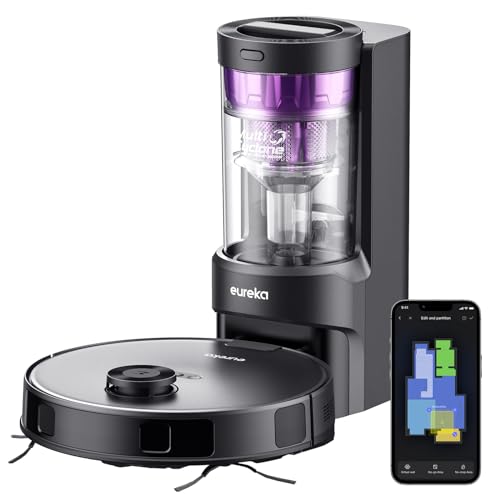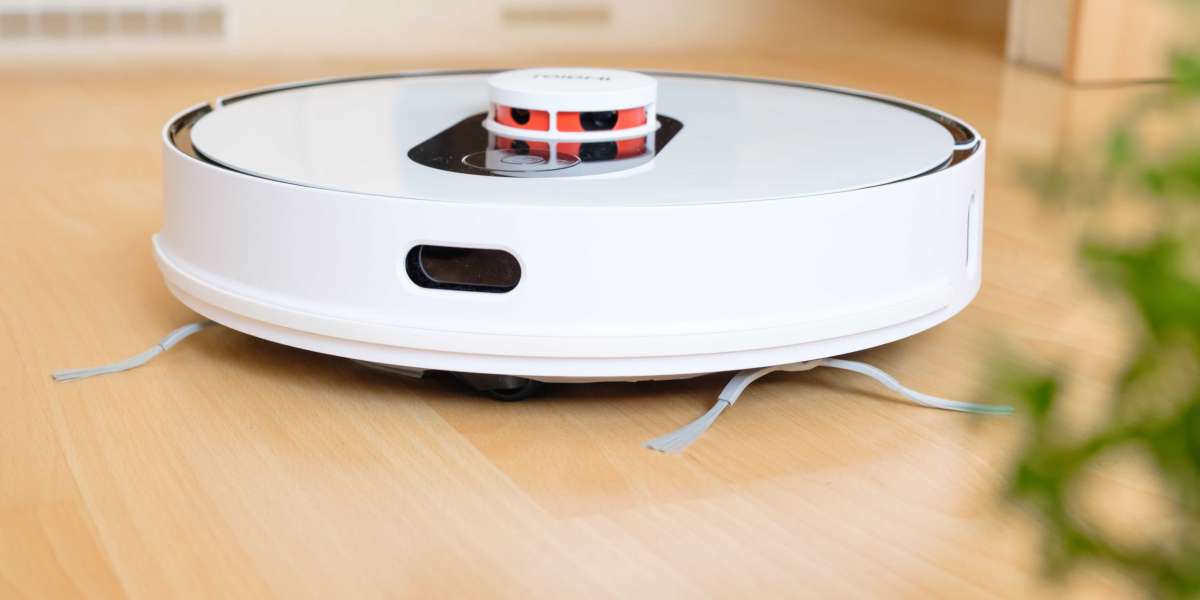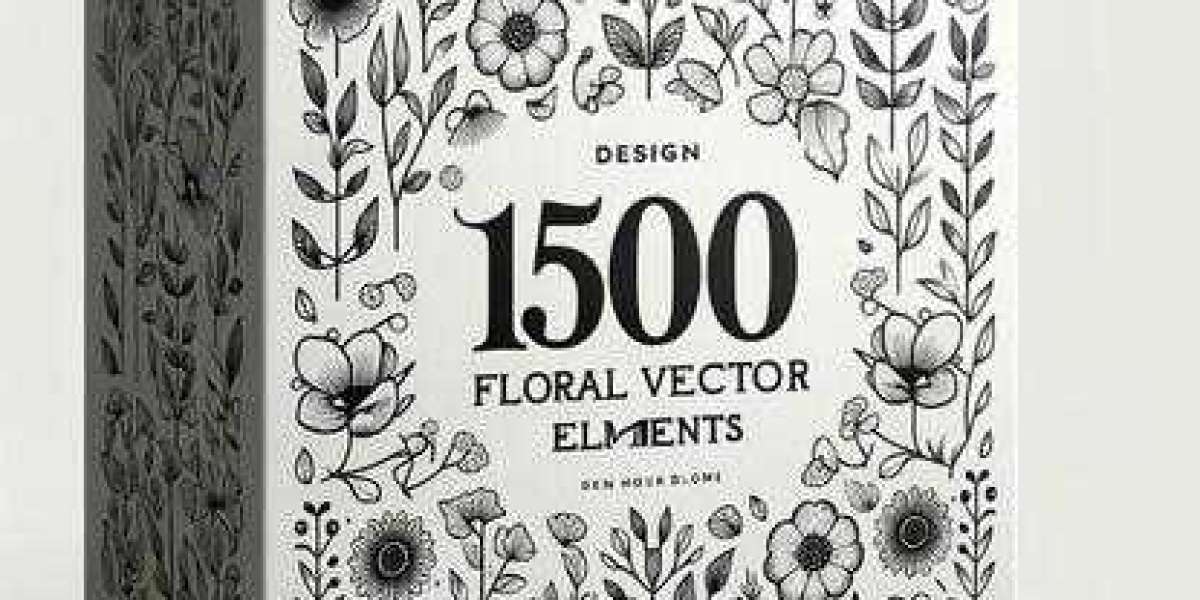If you're looking for a hands-free cleaner that can perform all of the tasks, think about this 2-in-1 robot. It mops hard floors and vacuums carpets with low and medium-pile carpets, and its app lets you create no-mop zones and adjust cleaning schedules and modes.
Look for models with sensors that can detect the kind of floor they are on as well as empty dirt and water from their own tanks, and avoid obstacles such as phone chargers, pet hair, and socks. Find out how easy the unit is to set up.
Self-Emptying
As the world gets busier and more chaotic, people are always seeking ways to reduce their workload. Robot vacuums and mops are among the most effective tools available to help you. They can clean dirt, pet hair and crumbs while simultaneously scrubbing the floors clean. You can make use of your smartphone or voice assistants to control these machines by using pre-programmed routines and specific room designations.
One of the most efficient time-savers for both the users and machines is self-emptying models that don't need you to empty the dustbin after each cleaning cycle. This can save you time and let your robot clean the entire house more frequently.
If you're considering the possibility of a robot that self-empties it, make sure to verify the size of the dustbin because it could quickly fill up if it is used regularly. You should also ensure that the system does not overfill, creating blockages that will stop the robot from being able to fully empty it.
The self-emptying feature works by removing the dust bin inside the machine and putting it in larger storage containers -- think of it as the bag that comes with a traditional vacuum cleaner -which can be empty every two or three cycles. It's a feature that is premium and makes these robots worth the cost over standard models.
 To mop Some models wash and dry their own soiled pads after every use. Others have docks that does the job for you and you only need to empty it once or twice a year.
To mop Some models wash and dry their own soiled pads after every use. Others have docks that does the job for you and you only need to empty it once or twice a year.Check out this Roborock robot that is highly rated for its ability to perform both tasks. The RockDock-S7 MaxV Ultra can both mop and vacuum, thanks to a a special dock that does all the maintenance for you. You don't have to empty the tanks manually and you can also schedule the unit to start with on-device controls and voice assistants such as Alexa and Google Assistant. It even has boundary strips to keep it out of certain zones if you don't want it roaming around your entire home.
Object Avoidance
The best robot vacuums feature object avoidance, which aids the appliance maneuver between furniture legs and toys for children. This feature is essential for households with pets or children, since the robot will be damaged or jammed if it bumps into them.
The technology is typically built on a single sensor or two sensors that are situated near the vacuum cleaner's shock-absorbing bumpers. Once these sensors detect a danger, the robot will automatically turn and reorient itself until it can find a clear path. Certain models employ a technology called lidar, which uses lasers to determine the distance between the robot and nearby objects. This allows the device to create a real-time map of its surroundings, and helps it move through your living space with more efficiency.
Other robovacs that don't use lidar technology are designed to make use of binocular or monocular vision to detect obstacles using cameras. These systems are most efficient in bright light, but they do not perform as well in low light or with objects that have the same color as the surrounding environment. A robot that has monocular vision is unable to distinguish cables and shoes.
Certain advanced robot vacuums can be more than just avoiding obstacles, which is why they're referred to as smart vacuums. They can create an imaginary map of your home's layout, and allow you to direct them to specific areas or rooms using the application. They'll also remember where they've cleaned before which will cut down on cleaning time and ensure your home is spotless.
The most advanced robotic vacuums and mops can change between different kinds of flooring. Certain models automatically recognize what type of flooring is in a room and adjust their suction and brush features in accordance with the flooring. Others can even move from carpet to hard floors without losing suction power.
Whatever the flooring regardless of the flooring type, all smart vacuums and mops should be equipped with a form of obstacle avoidance. These devices ensure that appliances don't ensnare themselves in a web of wires, which can cause them to lose suction. Some models have a list of objects they are aware of, such as socks, shoes and pet waste. The most effective models are able to identify these items and calculate their size, distance and avoid them without crashing into them.
Floor Mapping
Most robot vacuums have sensors that allow them to detect objects. If something, like furniture legs or a toy that is thrown in a random fashion is in the way of the vacuum cleaner's path a sensor will tell it to move away and to move to a cleaner area of the floor. The sensors aren't completely foolproof. The Roomba 900 Series, for example, was able to stay clear of our shoeslaces and headphones but it did end up sucking into the cable. We recommend moving objects out of the robot's path before letting it move through your home.
Many of the mopping and vacuum robots we have tested in The Spruce include an app. It can be used to save maps, make schedules, select cleaning modes, and monitor your robot's performance. The best apps offer features that make your robot more efficient. They are intuitive and simple to use.
App integration also lets you keep the track of your robot's water tank as well as dirty pads. Find models that allow you to see the level of filling in the tank and how much the pad is wet, and when it's time to change the cloth. You can set up a routine that will automatically change the pad every time it gets wet to stop mildewy odors from that build up.
The mapping feature is important for robot vacuums that operate on different floors. It allows the robots to create maps of your house that they can use to navigate and clean different areas. Certain robots integrate sensors with artificial intelligence to create maps. For example, iRobot’s Vacuuming Mapping utilizes multiple sensors to scan a space that includes walls and corners to determine the distance the robot can travel before it hits furniture or bumps into obstacles.
Other robots, such as the Ecovacs Deebot X1-OMNI and the Roborock S7 MaxV Ultra, use optical sensors to determine where the walls are. They then employ a mapping algorithm or follow the edges of the furniture to figure out the most efficient way to travel through each room.
Mopping Settings
Robot vacuums operate automatically, with you doing nothing more than press the button on a remote or in an app to clean a room. You can also set schedules with voice commands. This is an excellent feature for busy families who need their robot cleaners to do their job at the same time every day.
Most robot mops have microfibre pads that are soaked using water tanks in their base, and many can be used multiple times before needing to clean or replace the pad. You should look for models that alter the amount of water dispensed to suit different flooring types. You'll also want to think about the dimensions of the tank, whether you can change the best robot mop (Get Source) cleaning mode between dry and wet mopping and how long a robot mop will last on a single charge.
The best robot mops can efficiently and quickly clean hard floors, and get under tables and around obstacles that you'd have trouble doing manually. They're not perfect, though they're not perfect, and may struggle to get up and down steps or over ledges that separate rooms. They also leave behind streaks of timber and tiles particularly in direct sunlight.
A good quality robot vacuum and mop ought to also have sensors that detect and avoid carpet. This is crucial in homes with different types of flooring because the robot will not be sucked into or run over carpets. It should be able to recognize other objects that might interfere with the cleaning, such as cords and tassels. This allows you to create "no-go zones" that will prevent the robot from entering these areas.
The majority of robot cleaners that we test in our CHOICE lab come with smart app integration. This lets you save your house's maps and set up cleaning schedules and select cleaning options. You'll also be able to create virtual barriers to prevent your robot from certain areas, and get (sometimes amusing) warnings of errors if the device has issues. Some applications are more user-friendly than others, and some provide a live webcam for monitoring of your robot.



